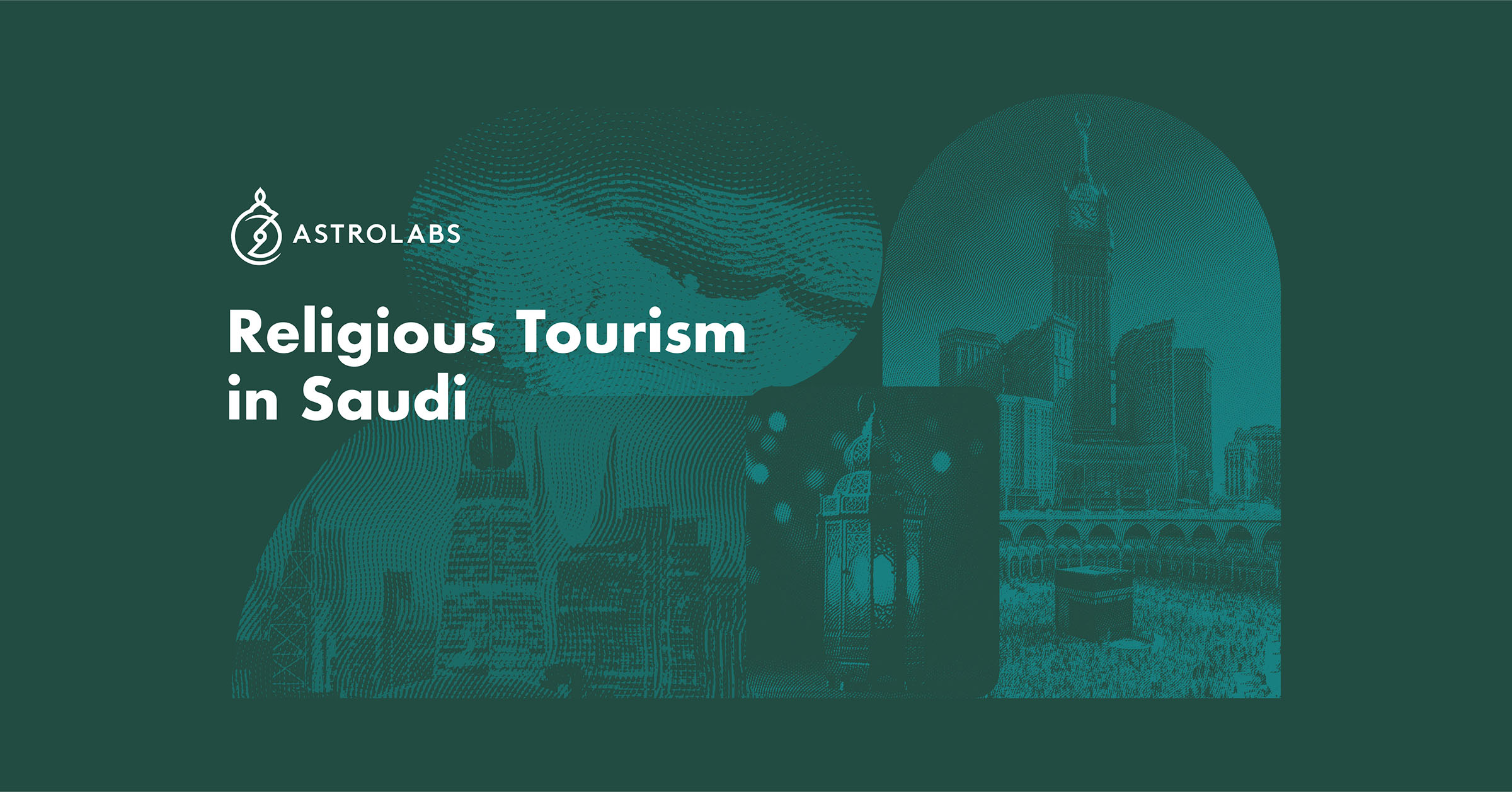Saudi Arabia has welcomed over 600 million visitors ever since the launch of Vision 2030. Religious tourism (Hajj and Umrah) continues to be a formidable force in the tourism drive and a vital source of the non-oil economy, playing a significant role in the Kingdom’s drive towards a diversified, diverse economy.
In terms of value, the religious tourism market stands as the second-largest source of income after hydrocarbons, contributing $12 billion annually to Saudi Arabia’s economy, 20% of its non-oil GDP, and 7% of its total GDP.
Much of the development happening in the Kingdom’s holy places, Makkah and Madinah, is closely aligned with Vision 2030 objectives to increase the number of pilgrims and boost its continued appeal as a global tourist destination.
Vision 2030’s Driving Force Behind Boosting Religious Tourism in Saudi
Religious tourism remains a major beneficiary of Vision 2030. In fact, the market’s contribution to Saudi GDP increased to 7% from 3% in 2016, the year Saudi Crown Prince Mohammed bin Salman unveiled Vision 2030, with tourism being announced as a core sector catalyzing the country’s aim for sustainable economic growth.
By 2030, the country aims to host 30 million pilgrims, part of a broader aim to attract 150 million domestic and international tourists annually in line with Saudi Vision 2030.
The introduction of e-visas in 2018 ushered in new advancements for the country’s broader tourism industry, enabling it to attract religious and non-religious visitors from all over the world, with the end goal for tourism to constitute 10% of its GDP, and create 1.6 million jobs.
The underpinning progress of the religious tourism market has a direct influence on the Kingdom’s employment sector and increasing employment prospects for local talents. According to government statistics, the religious tourism space employed a workforce of 236,000 in 2022, underscoring the sector’s role in boosting the country’s Saudization drive.
Increasing Business Opportunity in Hospitality
As the country expedites towards becoming one of the largest tourism source markets worldwide, the economic effect of ever-growing religious tourism reverberates strongly in a plethora of ancillary industries such as retail, accommodation, and hospitality, propelling the country further on its upward economic trajectory.
Saudi tourism’s resurgence has led to an upsurge of hotel activity nationwide, notably in Makkah and Madinah, which are among the most-visited cities globally and in the Kingdom. Amid the country’s evolving hospitality landscape, the cities of Makkah and Madinah, combined, account for over 75% of hotels operating in the country, with Makkah accounting for 450,000 hotel rooms in 1,151 licensed hotels and Madinah incorporating 75,000 hotel rooms.
The two holy cities are becoming hotspots for major hotel brands seeking continued growth and expansion to capitalize on the long-term prospect of growth and serve the global demand of religious pilgrims. One stark example is Abraj Kuda, which will be the largest in the world, nestled in Makkah, with a planned capacity of 10,000 rooms upon completion.
Under the Vision 2030 strategy, an estimated 221,000 new hotel rooms are planned across these two cities, living up to their potential as an instrumental catalyst for foreign investments and fostering the growth of the tourism and hospitality sectors.
Aiding this market’s forward momentum are a couple of large-scale development projects geared towards the holy city. One is Makkah Masar Destination, a transformative urban development that enhances life for residents and visitors through activities, connectivity projects, and public spaces. The project is expected to provide a total of 24,000 rooms. The other is Rua Al Madinah, expected to add more than 47,000 hotel rooms, generating 93,000 job opportunities.
The growing stature of the Kingdom’s global tourism leader has been the driving force behind the upliftment of Saudi Arabia’s hospitality sector, with holy cities at the forefront of a transformative shift toward harnessing tourism’s full potential for inclusive growth.
Building a Resilient Infrastructure to Support Surge in Travelers
One key factor contributing to the continuous growth of religious tourism in Saudi Arabia is its exceptional infrastructure. Over the past few years, the government has made substantial investments in infrastructure by developing transportation and logistics services that cater to pilgrims’ needs and facilitate their journey from and to the Two Holy Mosques, aligning with the objectives outlined in Vision 2030.
Examples include the Makkah Public Transport Program, the rollout of the Al-Haramain (two holy mosques) train, and the King Abdulaziz International Airport (KAIA) recently announced $31 billion expansion project, which looks to increase its capacity to accommodate 114 million passengers a year.
As infrastructure continues to be a focus area of domestic and foreign investments, global companies are drawn by the market opportunity in the Kingdom, including Grankraft, an AstroLabs’ expansion network member.
The company recently expanded to the Saudi market, where it leverages its multifaceted expertise in design, engineering, manufacturing, and construction to spearhead two key infrastructural ventures in Saudi Arabia. These include the Sheybarah South Hotel, part of the Red Sea Global Island project, and the King Khaled International Airport. Currently, Grankraft is working to construct a state-of-the-art roof raft for the Shura Island Hotel.
With a significant rise in the number of incoming visitors as part of Saudi Arabia’s Vision 2030, the two holy cities of Makkah and Madinah are set to be a prolific center for more investments in the years to come and the catalyst for positive changes in the realm of tourism and hospitality, fueling the country’s rapid growth as a global hub for innovation and commerce.
Capitalize on Saudi’s tourism momentum. Expand your tourism-focused business to the Kingdom.

